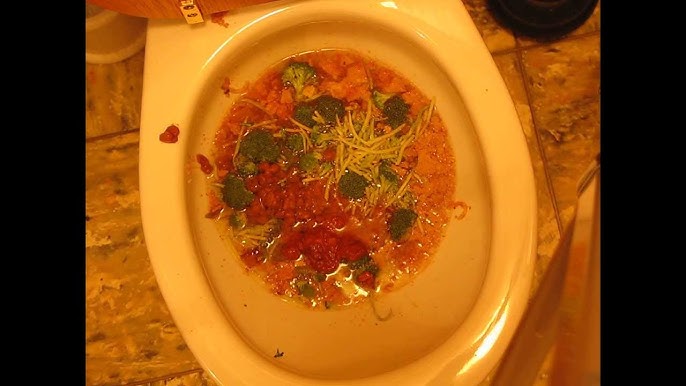Is it Sensible to Dispose of Food in the Toilet?
Is it Sensible to Dispose of Food in the Toilet?
Blog Article
On this page below you can get a lot of awesome ideas in relation to What Can Happen If You Flush Food Down the Toilet?.

Intro
Many people are often faced with the problem of what to do with food waste, particularly when it involves leftovers or scraps. One common question that occurs is whether it's all right to purge food down the bathroom. In this post, we'll delve into the reasons that individuals might consider purging food, the effects of doing so, and alternate approaches for appropriate disposal.
Reasons why people might consider flushing food
Absence of awareness
Some individuals may not be aware of the possible harm caused by purging food down the bathroom. They may erroneously think that it's a harmless technique.
Convenience
Flushing food down the bathroom might seem like a quick and easy solution to dealing with unwanted scraps, particularly when there's no neighboring trash bin available.
Negligence
Sometimes, individuals might merely choose to flush food out of sheer laziness, without thinking about the consequences of their actions.
Consequences of flushing food down the commode
Environmental influence
Food waste that ends up in waterways can add to contamination and harm water ecological communities. In addition, the water used to flush food can strain water sources.
Plumbing concerns
Purging food can lead to blocked pipelines and drains, causing pricey pipes repair services and hassles.
Sorts of food that must not be purged
Coarse foods
Foods with fibrous appearances such as celery or corn husks can obtain tangled in pipelines and trigger blockages.
Starchy foods
Starchy foods like pasta and rice can take in water and swell, bring about blockages in pipelines.
Oils and fats
Greasy foods like bacon or food preparation oils need to never be flushed down the bathroom as they can strengthen and cause obstructions.
Correct disposal methods for food waste
Using a waste disposal unit
For homes equipped with garbage disposals, food scraps can be ground up and purged with the plumbing system. However, not all foods appropriate for disposal in this manner.
Recycling
Specific food product packaging products can be recycled, minimizing waste and decreasing ecological impact.
Composting
Composting is an environmentally friendly means to take care of food waste. Organic products can be composted and made use of to enhance soil for horticulture.
The value of proper waste administration
Minimizing ecological injury
Correct waste management methods, such as composting and recycling, assistance lessen air pollution and preserve natural deposits for future generations.
Shielding plumbing systems
By preventing the technique of flushing food down the bathroom, property owners can prevent expensive pipes fixings and maintain the stability of their pipes systems.
Verdict
In conclusion, while it might be alluring to flush food down the commode for benefit, it is very important to comprehend the potential consequences of this action. By taking on correct waste management practices and disposing of food waste responsibly, individuals can add to much healthier pipes systems and a cleaner setting for all.
FLUSH FOOD DOWN THE TOILET?
FLUSHING FOOD CAN CAUSE BLOCKED DRAINS IN YOUR HOME
All of the plumbing fixtures in your home are connected to the same sewer pipe outside of your home. This outdoor sewer pipe is responsible for transporting all the wastewater from your home to the Council sewer mains. Even small pieces of food that go down the kitchen sink can cause problems for your sewer. It should therefore be obvious that flushing larger bits of food, such as meat, risks a clog in either the toilet itself or the sewer pipes. Flushing greasy food is even more problematic because oil coagulates when it cools, coating the interior lining of your pipes.
THE TOILET IS NOT A BIN
Food isn’t the only thing that people shouldn’t be flushing down the toilet. People use the toilet to dispose of all kinds of things such as tampons, makeup wipes, dental floss, kitty litter and even underwear. Water goes to great lengths to educate residents about the high costs and stress placed on wastewater treatment systems simply from people flushing the wrong stuff down the toilet. It costs taxpayers millions of dollars each year, and homeowners thousands in blocked drain repairs.
FLUSHING FOOD IS A WASTE OF WATER
Flushing food is a waste of our most precious resource - water. In June this year Level 1 water restrictions were introduced to protect water supply from drought conditions. Much of New South Wales continues to be affected by prolonged drought with recent figures revealing up to 97 per cent of the state remains in drought. Depending on whether you have a single or dual flush toilet, every single flush uses between five and 11 litres of water. In the current climate this is a huge amount of water to be wasting on flushing food that should be placed in the bin (or better yet, the compost).
https://www.jabplumbingsolutions.com.au/blog/can-you-flush-food-down-the-toilet

We had been shown that editorial on Is it safe to flush food (especially rice) down the toilet? from a pal on a different blog. Sharing is nice. You never know, you will be doing someone a favor. Many thanks for your time. Come back soon.
Appointment Report this page